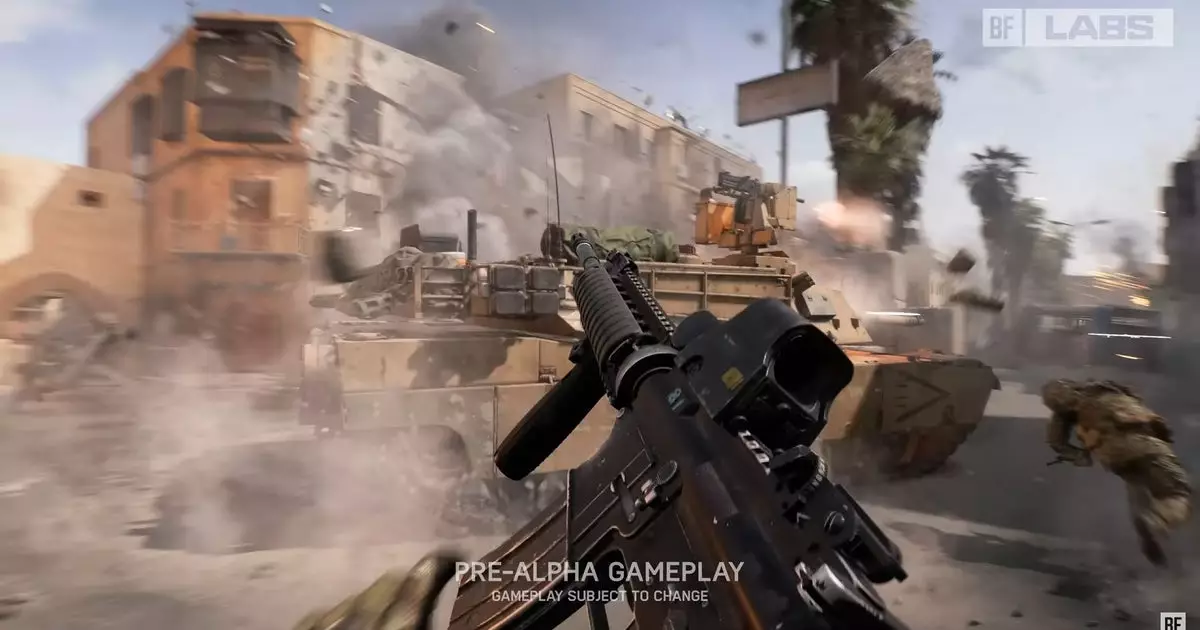As the gaming world gears up for the release of Battlefield 6, excitement is mingled with skepticism. The recently unveiled promotional video provided a glimpse into the chaos that players have come to expect—a gloriously chaotic blend of explosions, gunfire, and crumbling infrastructure. This latest iteration of the franchise promises an evolution of the “core experience,” yet the foundation appears to remain rooted in the same explosive gameplay mechanics that have defined the series. While the promise of enhanced features is enticing, one cannot help but wonder whether the developers are merely repackaging familiar elements under the guise of innovation.
In a striking move, the promotional video showcases a collaborative effort from four different studios: Dice, Criterion, Motive, and Ripple Effect. Each studio contributes to the overall development, suggesting a shared vision for the game’s future. However, the enthusiasm conveyed by the producers feels scripted and lacks the genuine passion that one might hope for from creators invested in their work. The video serves more as a corporate pep rally than an earnest discussion about the innovative advancements that players can expect. Instead of presenting fresh ideas, it reiterates known features—the inclusion of a single-player campaign and the anticipated modern or near-future setting feels like familiar territory rather than groundbreaking revelations.
One of the noteworthy announcements was the introduction of “Battlefield Labs,” designed for public playtesting. This initiative seems to be a nod to community engagement, offering fans a chance to influence the game’s development. Yet, the term “playtest” raises eyebrows. It essentially translates to players signing a Non-Disclosure Agreement (NDA) and being given access to a game that may still be in disarray. While it is commendable that EA is attempting to involve the gaming community, this practice has become a common strategy among various developers. It prompts questions about the authenticity of community input in a pre-determined framework for feedback.
Despite the feigned solidarity among the four studios involved, there lies an undercurrent of uncertainty regarding the actual efficacy of this cooperation. Criterion’s involvement has yielded a postponement of their own projects, notably in the racing genre. Additionally, the absence of Ridgeline Games, once touted as a contributor to the campaign, is glaring. The closure of their studio last year leaves a palpable void and raises further concerns about the game’s directional stability. The promotional piece, seemingly glossing over these aspects, renders the unity portrayed by the developers somewhat superficial.
As anticipation builds for Battlefield 6, it becomes increasingly clear that players are at a crossroads of expectation versus reality. While the promotional video paints a thrilling picture of what’s to come, the familiar structure of the franchise may offer more of the same rather than pushing the boundaries of innovation. Amid sketches of corporate unity and community engagement, the lingering questions about gameplay depth and transformative experiences remain. Whether or not Battlefield 6 can rise above the challenges and prove itself as a worthy successor will ultimately fall into the hands of the players.


Leave a Reply